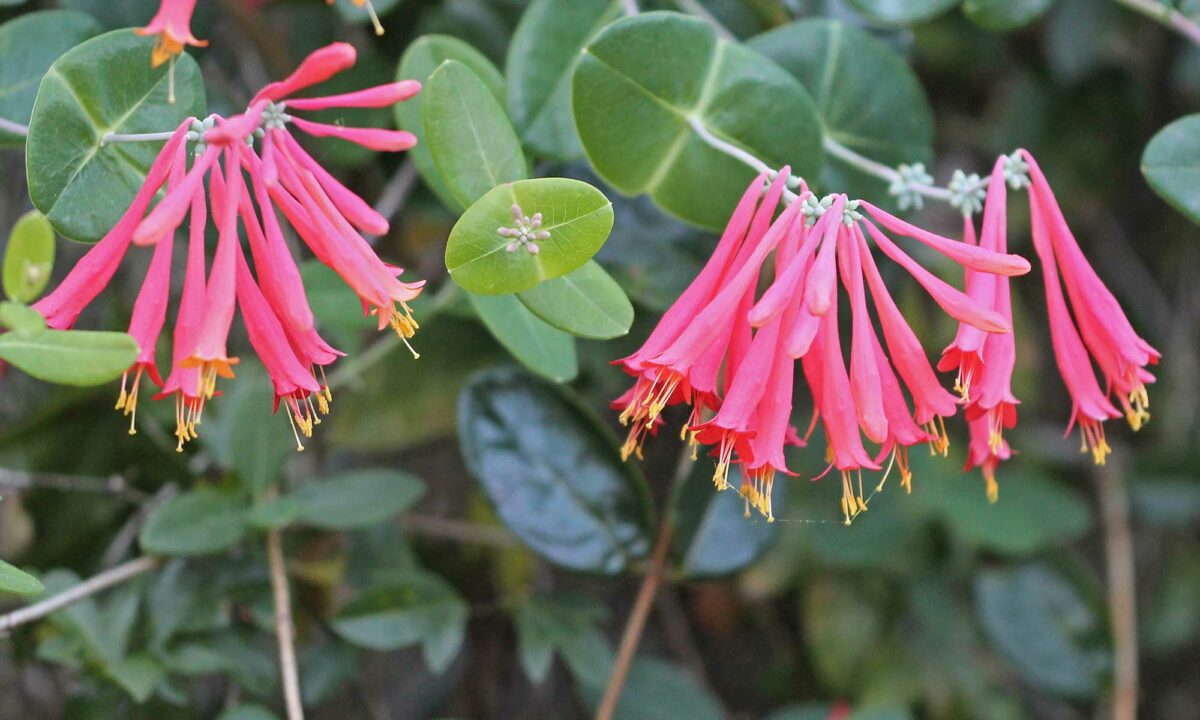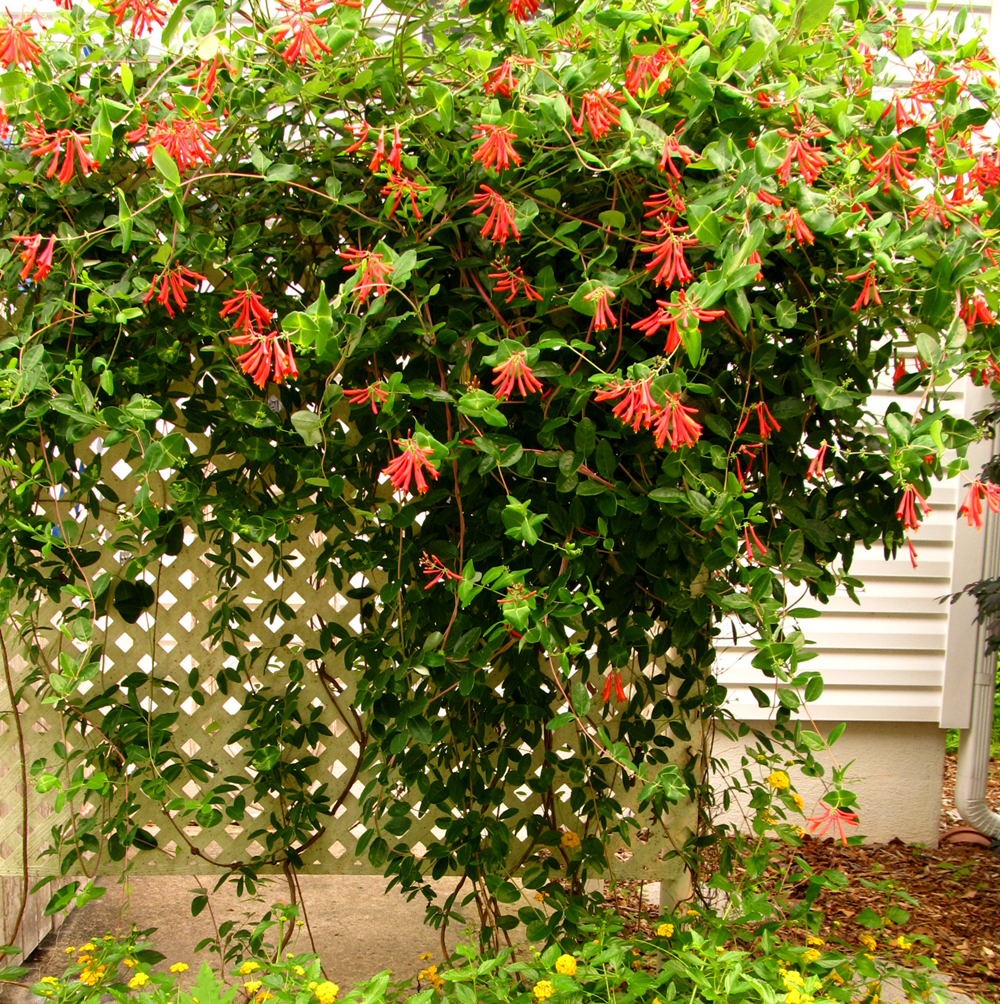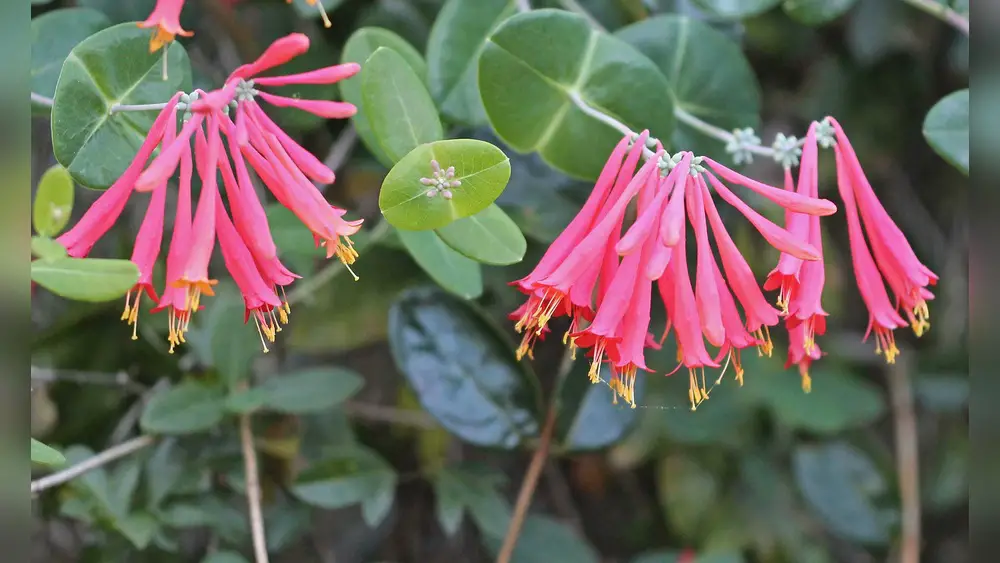Are you ready to add a splash of color and sweet fragrance to your Florida garden? Knowing the best time to plant honeysuckle is key to helping your vines flourish and fill your outdoor space with beauty.
Planting at the right moment gives your honeysuckle the strongest start, allowing roots to settle before the heat of summer or cooler weather arrives. Whether you’re aiming for a vibrant trellis or a charming groundcover, this guide will show you exactly when and how to plant honeysuckle in Florida for the best results.
Keep reading to discover the perfect planting window and expert tips that will make your honeysuckle thrive year after year.
Ideal Planting Seasons
Choosing the right season to plant honeysuckle in Florida helps the plant thrive. The ideal planting seasons offer mild temperatures and enough moisture. These conditions allow honeysuckle roots to grow strong before facing hot summers or cooler winters. Understanding the best times ensures healthy growth and vibrant blooms.
Early Spring Timing
Plant honeysuckle in early spring after the last frost date. Florida’s mild spring weather supports root growth and reduces stress. The soil warms up, encouraging seeds or young plants to establish quickly. Early spring planting gives honeysuckle a full growing season to develop.
Fall Planting Benefits
Fall is another excellent time to plant honeysuckle in Florida. Cooler temperatures and seasonal rains help roots grow deep. Fall planting allows the plant to settle before the heat of summer arrives. It also reduces water needs and protects young plants from heat stress.
Planting Seeds In Autumn
Planting honeysuckle seeds in autumn helps natural cold stratification. This process breaks seed dormancy and improves germination rates. Seeds stay in the soil over winter and sprout in spring. Autumn planting is a low-maintenance way to grow honeysuckle from seed.
Choosing Honeysuckle Varieties
Choosing the right honeysuckle variety for Florida gardens is important for healthy growth and beautiful blooms. Different types of honeysuckle thrive under Florida’s climate. Some varieties are better suited to local conditions, while others may cause problems. Knowing which types to plant helps avoid invasive species and ensures vibrant flowers that add charm to your garden.
Florida-friendly Options
Coral honeysuckle is a top choice for Florida gardens. It grows well in the heat and humidity. This variety attracts hummingbirds and butterflies. Native honeysuckles like Lonicera sempervirens offer bright, coral-colored flowers. These types do not spread aggressively and fit well with Florida’s ecosystem. Choosing Florida-friendly plants supports local wildlife and requires less care.
Avoiding Invasive Types
Japanese honeysuckle is common but invasive in Florida. It spreads quickly and chokes native plants. Avoid planting this type to protect local habitats. Invasive honeysuckles damage the environment and can be hard to control. Choose non-invasive varieties to keep your garden healthy and balanced. Responsible planting helps preserve Florida’s natural beauty.
Flower Color Choices
Honeysuckle flowers come in many colors. Red, orange, yellow, and white are popular shades. Coral honeysuckle shows bright red and orange blooms. Yellow honeysuckle adds a soft, sunny touch to gardens. White flowers offer a classic look and attract night pollinators. Select colors that match your garden style and attract desired wildlife.
Site Selection And Soil
Choosing the right site and soil is key to growing healthy honeysuckle in Florida. The plant thrives in spots where conditions suit its growth needs. Understanding sunlight, soil type, and soil preparation can help your honeysuckle flourish.
Sunlight Requirements
Honeysuckle grows best with full sun exposure. Aim for at least six hours of direct sunlight daily. Partial shade is acceptable but may reduce flowering. Bright light encourages strong growth and more blooms.
Soil Type And Preparation
Honeysuckle prefers well-draining soil with moderate fertility. Florida soils often range from sandy to loamy. Before planting, clear the area of weeds and debris. Loosen the soil to allow roots to spread easily. A slightly acidic to neutral pH between 6.0 and 7.0 suits honeysuckle well.
Improving Sandy Soil
Sandy soil drains quickly but lacks nutrients and moisture. Add organic matter like compost or peat moss to enrich the soil. This helps retain moisture and provides nutrients. Mulching around the base further conserves water and protects roots. Regular watering is essential, especially during dry spells.
Supporting Honeysuckle Growth
Supporting honeysuckle growth in Florida requires proper care and structure. Honeysuckles are climbing plants that need support to grow well. Providing a good framework helps the vine climb and spread. It also improves air circulation and sunlight exposure. These factors lead to healthier plants and more flowers.
Good support prevents damage from wind and heavy blooms. It also keeps the plant tidy and easier to manage. The following tips cover ways to support honeysuckle for strong growth.
Trellis And Arbor Setup
Use a sturdy trellis or arbor to support honeysuckle vines. Wood or metal structures work well and last long. Place the trellis in a sunny spot with good air flow. Secure the base firmly in the ground to hold the weight of the plant. Space the supports so the vine can spread naturally. A wide trellis allows more flowers to bloom.
Using Ties And Twine
Soft ties or twine help train the vine along the support. Tie the stems gently to avoid damage. Check ties regularly and adjust as the plant grows. Remove ties that become too tight. Use natural materials like jute or cloth strips for ties. They breathe better and reduce harm to the stems.
Groundcover Planting Tips
Honeysuckle can also spread as groundcover in Florida gardens. Plant in well-drained soil with some shade. Keep the area free of weeds to reduce competition. Water regularly, especially during dry spells. Mulch around the plants to keep the soil moist and cool. Trim the vines to control growth and encourage fullness.
Planting Techniques
Proper planting techniques ensure your honeysuckle thrives in Florida’s climate. Following simple steps helps the plant establish strong roots and grow vigorously. Prepare the site and soil before planting. Handle the plant carefully to avoid damage. Position the honeysuckle correctly for best growth. Water and care for it right after planting.
Digging The Hole
Dig a hole twice as wide as the root ball. The depth should match the plant’s root height. Loosen the soil around the hole edges. This helps roots spread easily. Remove rocks and debris from the hole. Good drainage prevents root rot and supports healthy growth.
Handling Roots
Gently remove the honeysuckle from its container. Avoid pulling on the stems or branches. If roots are tightly wound, loosen them slightly. Untangle circling roots to encourage outward growth. Trim any broken or dead roots with clean scissors. Healthy roots absorb water and nutrients better.
Positioning The Plant
Place the honeysuckle in the hole. The top of the root ball should be level with soil surface. Keep the plant upright and steady. Space it away from walls or fences to allow air flow. Proper positioning reduces disease risk and supports growth.
Backfilling And Watering
Fill the hole with soil gently, pressing down to remove air pockets. Avoid compacting the soil too hard. Water the plant deeply after filling the hole. This settles the soil and hydrates roots. Continue watering regularly during the first weeks. Moist soil helps the plant establish quickly.

Credit: www.flawildflowers.org
Care For Faster Growth
Proper care helps honeysuckle grow faster and healthier in Florida’s climate. Focus on consistent watering, timely fertilizing, and managing tricky spots like rain shadows. These simple steps support strong root and vine development. Watch your honeysuckle thrive with a little attention.
Watering During Dry Spells
Honeysuckle needs regular water, especially in dry weather. Water deeply once or twice a week to keep soil moist. Avoid letting the soil dry out completely. Use mulch to keep moisture in the ground longer. This helps roots grow strong and prevents stress.
Spring Fertilizing
Feed honeysuckle plants in early spring to boost growth. Use a balanced, general-purpose fertilizer for best results. Apply fertilizer evenly around the base of the plant. This encourages healthy leaves and more flowers. Do not over-fertilize, as it can harm the plant.
Managing Rain Shadow Effects
Watch out for rain shadows near walls or fences. These spots often miss natural rainfall and dry out quickly. Add extra water to these areas to keep soil moist. Use mulch to protect roots from heat and dryness. Proper care here prevents slow growth and plant stress.
Managing Growth And Maintenance
Managing growth and maintenance is key to keeping honeysuckle healthy in Florida. These vines can grow fast and spread wide without care. Proper attention helps maintain a beautiful shape and controls unwanted growth. Regular upkeep also encourages vibrant blooms season after season.
Understanding pruning techniques and growth control makes honeysuckle easier to manage. It also protects nearby plants from being overtaken. In Florida’s warm climate, honeysuckle thrives but needs consistent care to stay neat and productive.
Pruning For Shape
Prune honeysuckle regularly to keep a tidy and attractive shape. Cut back long, leggy stems to encourage bushier growth. Focus on removing dead or weak branches to boost air circulation. Shaping the plant early helps prevent it from becoming too wild or tangled.
Winter Shearing
Shearing honeysuckle in winter helps prepare it for new growth in spring. Trim back the plant by about one-third to remove old wood. This process stimulates fresh shoots and more flowers during the growing season. Winter shearing also controls size and prevents excessive spreading.
Controlling Spread
Honeysuckle can spread quickly if left unchecked. Use physical barriers or root pruning to limit its reach. Regularly trim runners and new shoots that grow beyond desired areas. Keeping the plant contained protects other garden plants and maintains a neat landscape.

Credit: www.amazon.com

Credit: www.fnps.org
Frequently Asked Questions
What Is The Best Month To Plant Honeysuckle?
The best month to plant honeysuckle is early spring after the last frost or fall before the ground freezes. These seasons help roots establish before extreme weather.
What Is The Best Honeysuckle For Florida?
Coral honeysuckle (Lonicera sempervirens) is the best honeysuckle for Florida. It is non-invasive and thrives in Florida’s climate.
What Makes Honeysuckle Grow Faster?
Water honeysuckle regularly during dry spells and fertilize with general-purpose feed in spring. Plant in well-draining, rich soil with full sun to partial shade. Avoid dry spots that limit moisture. Provide support for climbing varieties to encourage faster growth and abundant flowering.
Where Is The Best Place To Plant A Honeysuckle Vine?
Plant honeysuckle in full sun to partial shade with well-draining, rich soil. Provide sturdy support for climbing vines.
Conclusion
Planting honeysuckle in Florida thrives best in early spring or fall. These seasons offer mild temperatures and ideal soil conditions. Early spring planting helps roots settle before summer heat arrives. Fall planting allows roots to grow during cooler months. Choose a sunny or partly shaded spot with well-draining soil.
Provide support like a trellis for climbing types. Regular watering and feeding promote healthy growth. Timing and care ensure your honeysuckle flourishes beautifully. Start planting at the right time to enjoy vibrant blooms year after year.

